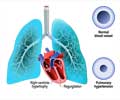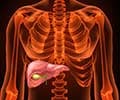Information about Ambrisentan
Generic Name : AmbrisentanUp-to-date prescription details regarding Ambrisentan are provided here.
Pronunciation : am-bree-SEN-tan
Learn the correct pronunciation of the Ambrisentan, understand it's uses, recommended dosages, its indications, how to take, when to take, when not to take, side effects, special precautions, warnings and its and its storage instructions.You will also find a list of the medication's International and Indian brand or trade names, as well as its pricing information. For verification of the information presented on this page or for additional clarifications, it's advisable to consult your doctor.
ICD Code : Y52.5 Therapeutic Classification : Anti- Hypertensives
Trade Names/Brand Names of Ambrisentan
International :
Letairis
Why is Ambrisentan Prescribed? (Indications)
This medication is an endothelin receptor antagonist, prescribed for pulmonary atrial hypertension (high blood pressure in the lungs). The medication blocks the effects of endothelin-1 thereby decreases blood pressure in lungs. The medication also inhibits the thickening of the blood vessel.When should Ambrisentan not be taken? (Contraindications)
♦ Contraindicated in patients with Idiopathic Pulmonary Fibrosis (IPF), pregnant women and known hypersensitivity. It should not be co-administered with cyclosporine.What is the dosage of Ambrisentan?
PO- The initial recommended dose is 5mg once daily with or without food. Maximum: 10mg once daily.How should Ambrisentan be taken?
It comes as a tablet to take by mouth, with or without food.What are the warnings and precautions for Ambrisentan?
• Caution should be exercised in patients with history of liver or kidney impairment, decreased sperm count, fluid retention, during breastfeeding.• Monitor liver function, complete blood count regularly while taking this medication.
What are the side effects of Ambrisentan?
Most common - Peripheral edema, nasal congestion, inflammation of sinuses, flushing, palpitations inflammation of nasopharynx, abdominal pain, nausea, loss of appetite, low fever, itching, constipation and difficulty in breathing.Central Nervous System- Headache.
Blood- Decrease in hemoglobin level.

![Pulmonary Arterial Hypertension [PAH] - Symptoms & Signs - Causes - Diagnosis - Treatment Pulmonary Arterial Hypertension [PAH] - Symptoms & Signs - Causes - Diagnosis - Treatment](https://www.medindia.net/images/common/patientinfo/120_100/pulmonary-arterial-hypertension-pah.jpg)




